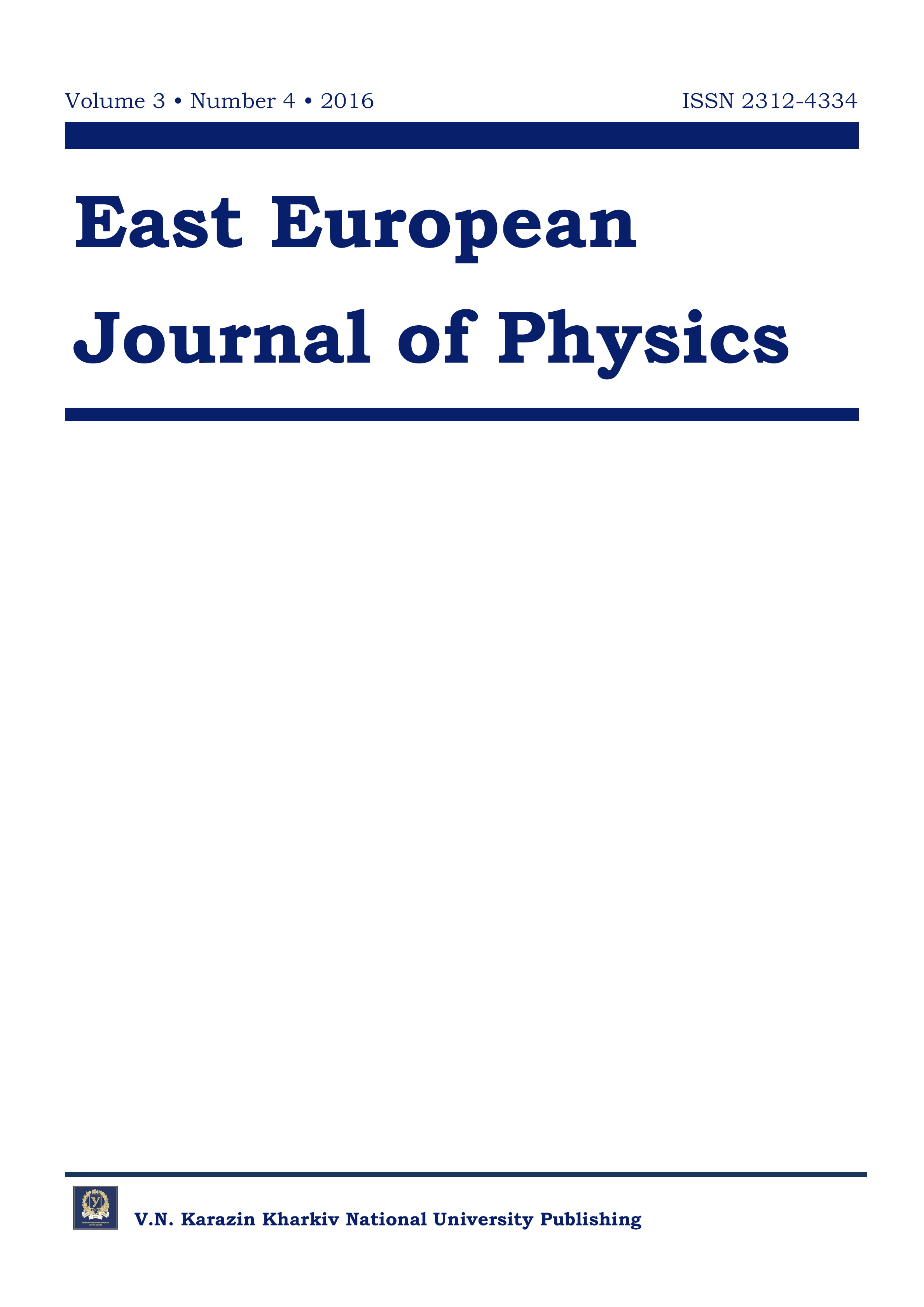Classification of Particles at Arbitrary Quantity of Generations. II. Leptons
Abstract
The hypothesis on quark nature of the leptons is proposed. Leptons are compacted q3 -systems. It ensures the equality of modules for the electric charges of the proton and the electron. The classification of particles based on the U(Nf,g)×SU(3,c)×SU(4,fs)×O(3) -group is proposed at arbitrary quantity Nf of the quark generations. The U(Nf,g) -group corresponds to the quark generations, the SU(3,c) -group describes the color variables, the SU (4,fs) - group corresponds to the variables in the spin (s) and flavor (f) spaces, and the O(3) -group describes the orbital excitations of quarks. In consequence of the Pauli principle leptons consist of antiquarks from 3 different generations. Minimal quantity of leptons with definite electric charge equal 20. Excited double charged (l−−) -leptons and (l++) -antileptons with the J^p=(1/2)+ and J^p=(1/2)- are predicted, respectively. They can be resonances in e−π−, e−K−, e+π+, e+K+, μ−π−, μ−K−, μ+π+, μ+K+ -systems.
Downloads
References
Akhiezer A.I., Rekalo M.P. Electrical charge of elementary particles // Uspekhi fizicheskikh nauk. – 1974. - Vol. 114. - P.478-508. (in Russion)
De Alfaro V., Fubini S., Furlan G., Rosseti C. Currents in hadron physics. – North-holland Publ. Comp. Amsterdam; American Elseviev Publ. Comp. Inc. – London, New York 1973; Moscow: Nauka, 1976. - P. 602. (in Russion)
Treiman S.B., Jaсkiw R., Gross D.J. Lectures on current algebra and its applications.-Princeton Univ. Pres.-Princeton. – 1972; Moscow: Atomizdat, 1977. – P. 93. (in Russion)
Close F.E. An introduction to quarks and partons. - Academic Press. - London, New York, San Francisco. - 1979; Moscow: Mir, 1982. - P.150 (in Russion)
Kulish Yu. V., Rybachuk E.V. Divergences of integrals for Green functions and necessary existence of particle generations // Journal of Kharkiv National University. - 2011. – No.955. - Is.2/50/. - P. 4-14.
Kulish Yu., Rybacuk E.V. Necessary generalization of Klein-Gordon and Dirac equations and existence of particle generations // Problems of Atomic Science and Technology. - 2012. – No. (77). - P. 16–20.
Kulish Yu.V. Elimination of singularities in causal Green functions of generalized Klein-Gordon and Dirac equations on light cone // East Europ. J. Phys. – 2016. – Vol. 3. – No. 3. – P. 73-83.
Kulish Yu.V. Classification of particles at arbitrary quantity of generations. I. Hadrons // East Europ. J. Phys. – 2016. – Vol. 3. – No. 4. – P. 22-33.
Kokkedee J.J.J. The quark model. - W.A. Benjamin, Inc. - New York, Amsterdam, 1969; Moscow: Mir, 1971. - 244 p. (in Russion)
Shelest V.P., Zinoviev G.M., Miranskij V.A. Models of strong-interacting elementary particles. Vol. 1. – Moscow: Atomizdat, 1975. – 232p. (in Russion)
Zima V.G., Nurmagambetov A.Yu. Particle physics from atoms to quarks. – Kharkov: V.N. Karazin Kharkov National University, 2014. – 266p. (in Russion)
Particle data group. Review of particle properties // Phys. Lett. – 1988. – Vol. 204. – No. 1. – P.1-486.
Kulish Yu.V. Interactions of elementary particles similar to gravitational ones // Problems of atomic science and technology. - 2001. – No. 6(1). – P.80-83.
Kulish Yu.V., Rybachuk E.V. Properties of high-spin boson interaction currents and elimination of power divergences // Problems of atomic science and technology. -2001. – No. 6(1). –P.84-87.
Kulish Yu.V., Rybachuk E.V. Properties of interaction currents for massive higher spin bosons // The Journal of Kharkiv National University, physical series “Nuclei, Particles, Fields”. – 2003. – No.585. – Iss.1(21). – P.49-55.
Gakh G.I. Non-conservation of muonic number and μ →eγγ−, μe→γγ−, γe→γμ − processes // Yad. Fiz. – 1979. – Vol. 30. – Iss. 1(7). – P. 198. (in Russion)
Authors who publish with this journal agree to the following terms:
- Authors retain copyright and grant the journal right of first publication with the work simultaneously licensed under a Creative Commons Attribution License that allows others to share the work with an acknowledgment of the work's authorship and initial publication in this journal.
- Authors are able to enter into separate, additional contractual arrangements for the non-exclusive distribution of the journal's published version of the work (e.g., post it to an institutional repository or publish it in a book), with an acknowledgment of its initial publication in this journal.
- Authors are permitted and encouraged to post their work online (e.g., in institutional repositories or on their website) prior to and during the submission process, as it can lead to productive exchanges, as well as earlier and greater citation of published work (See The Effect of Open Access).








